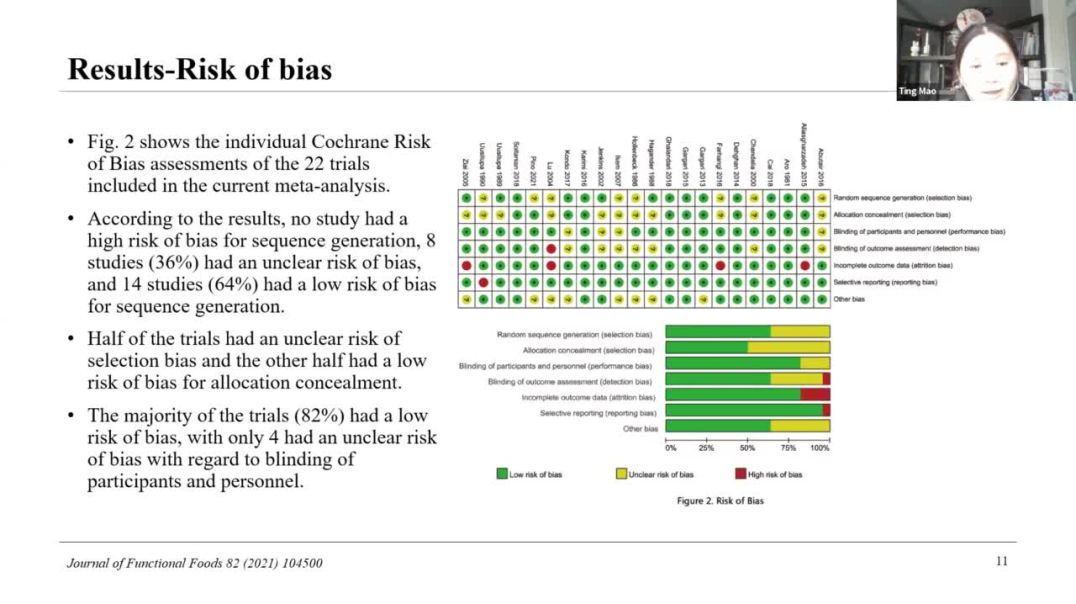Effects of Dietary Fiber on Glycemic Control and Insulin Sensitivity in Patients | Ting Mao
Summary :
This review aimed to assess the effect of dietary fiber on short-term and long-term glycemic control and insulin responses in T2DM patients. Five electronic databases were searched for randomized controlled trials (RCTs) published in English and investigating one primary outcome—glycated hemoglobin (HbA1c), and six secondary outcomes—fasting blood glucose (FBG), fasting insulin, Homeostatic Model Assessment for Insulin Resistance (HOMA-IR), two-hour postprandial glucose, two-hour postprandial insulin, and body mass index (BMI) through March 23, 2021. Of 3266 identified studies, 22 eligible RCTs comprising 911 participants with T2MD were included. Among them, 16 studies used soluble fiber and the rest used fiber from natural foods. Subgroup analysis demonstrated that soluble fiber was more efficient in controlling HbA1c and FBG than fiber from natural foods. Compared with the control, dietary fiber at a median dose of 10 g/day for a median intervention duration of 8 weeks significantly reduced HbA1c, FBG, fasting insulin, and HOMA-IR. In conclusion, both soluble fiber products and fiber from natural foods are effective in improving glycemic control and insulin sensitivity in T2MD patients, the former yielding better effects. However, due to most of the evidence from rather short-term trials and the detected significant between-study heterogeneity, further long-term and high-quality RCTs are needed.
About Author :
I am a register dietitian and psychological consultant in China. I got my master’s degree in Nutrition and Dietetics in Saint Louis University and after that, I came back to China to work as a dietitian for around 7 years and now I am pursuing my PhD in Food Science in Lincoln University. My research is mainly focus on exploring the health effects of bioactive ingredients such as dietary fiber and polyphenols. I am also interested in discovering milk proteins as delivery vehicles for beneficial compounds.




